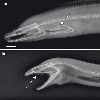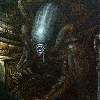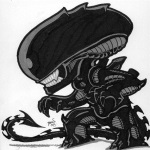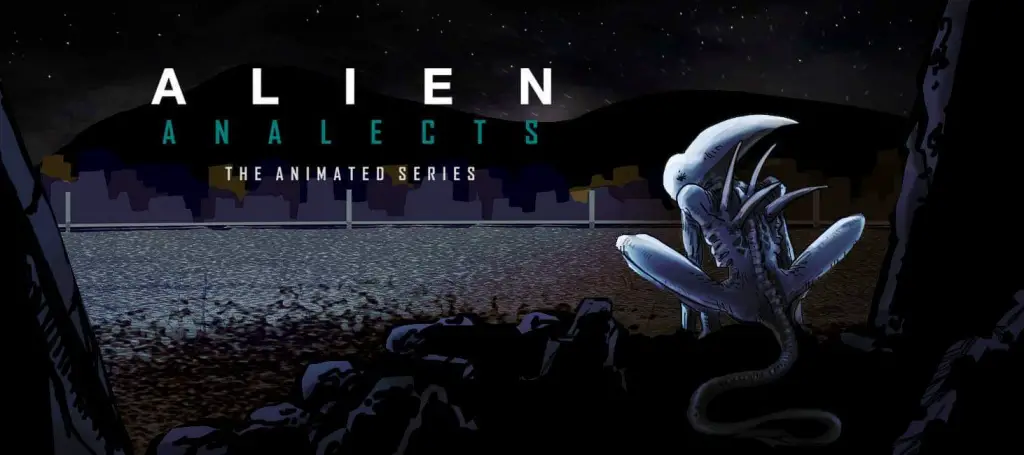Prometheus Fan Anaylsis and Explanation

Jem587
MemberFacehuggerMay-06-2017 9:22 PMPrometheus contains such a huge amount of mythic resonance that it effectively obscures a more conventional plot. I'd like to draw your attention to the use of motifs and callbacks in the film that not only enrich it, but offer possible hints as to what was going on in otherwise confusing scenes.
Let's begin with the eponymous titan himself, Prometheus. He was a wise and benevolent entity who created mankind in the first place, forming the first humans from clay. The Gods were more or less okay with that, until Prometheus gave them fire. This was a big no-no, as fire was supposed to be the exclusive property of the Gods. As punishment, Prometheus was chained to a rock and condemned to have his liver ripped out and eaten every day by an eagle. (His liver magically grew back, in case you were wondering.)
Fix that image in your mind, please: the giver of life, with his abdomen torn open. We'll be coming back to it many times in the course of this article.
The ethos of the titan Prometheus is one of willing and necessary sacrifice for life's sake. That's a pattern we see replicated throughout the ancient world. J G Frazer wrote his lengthy anthropological study, The Golden Bough, around the idea of the Dying God - a lifegiver who voluntarily dies for the sake of the people. It was incumbent upon the King to die at the right and proper time, because that was what heaven demanded, and fertility would not ensue if he did not do his royal duty of dying.
Now, consider the opening sequence of Prometheus. We fly over a spectacular vista, which may or may not be primordial Earth. According to Ridley Scott, it doesn't matter. A lone Engineer at the top of a waterfall goes through a strange ritual, drinking from a cup of black goo that causes his body to disintegrate into the building blocks of life. We see the fragments of his body falling into the river, twirling and spiralling into DNA helices.
Ridley Scott has this to say about the scene: 'That could be a planet anywhere. All he’s doing is acting as a gardener in space. And the plant life, in fact, is the disintegration of himself. If you parallel that idea with other sacrificial elements in history – which are clearly illustrated with the Mayans and the Incas – he would live for one year as a prince, and at the end of that year, he would be taken and donated to the gods in hopes of improving what might happen next year, be it with crops or weather, etcetera.'
Can we find a God in human history who creates plant life through his own death, and who is associated with a river? It's not difficult to find several, but the most obvious candidate is Osiris, the epitome of all the Frazerian 'Dying Gods'.
And we wouldn't be amiss in seeing the first of the movie's many Christian allegories in this scene, either. The Engineer removes his cloak before the ceremony, and hesitates before drinking the cupful of genetic solvent; he may well have been thinking 'If it be Thy will, let this cup pass from me.'
So, we know something about the Engineers, a founding principle laid down in the very first scene: acceptance of death, up to and including self-sacrifice, is right and proper in the creation of life. Prometheus, Osiris, John Barleycorn, and of course the Jesus of Christianity are all supposed to embody this same principle. It is held up as one of the most enduring human concepts of what it means to be 'good'.
Seen in this light, the perplexing obscurity of the rest of the film yields to an examination of the interwoven themes of sacrifice, creation, and preservation of life. We also discover, through hints, exactly what the nature of the clash between the Engineers and humanity entailed.
The crew of the Prometheus discover an ancient chamber, presided over by a brooding solemn face, in which urns of the same black substance are kept. A mural on the wall presents an image which, if you did as I asked earlier on, you will recognise instantly: the lifegiver with his abdomen torn open. Go and look at it here to refresh your memory. Note the serenity on the Engineer's face here.
And there's another mural there, one which shows a familiar xenomorph-like figure. This is the Destroyer who mirrors the Creator, I think - the avatar of supremely selfish life, devouring and destroying others purely to preserve itself. As Ash puts it: 'a survivor, unclouded by conscience, remorse or delusions of morality.'
Through Shaw and Holloway's investigations, we learn that the Engineers not only created human life, they supervised our development. (How else are we to explain the numerous images of Engineers in primitive art, complete with star diagram showing us the way to find them?) We have to assume, then, that for a good few hundred thousand years, they were pretty happy with us. They could have destroyed us at any time, but instead, they effectively invited us over; the big pointy finger seems to be saying 'Hey, guys, when you're grown up enough to develop space travel, come see us.' Until something changed, something which not only messed up our relationship with them but caused their installation on LV-223 to be almost entirely wiped out.
From the Engineers' perspective, so long as humans retained that notion of self-sacrifice as central, we weren't entirely beyond redemption. But we went and screwed it all up, and the film hints at when, if not why: the Engineers at the base died two thousand years ago. That suggests that the event that turned them against us and led to the huge piles of dead Engineers lying about was one and the same event. We did something very, very bad, and somehow the consequences of that dreadful act accompanied the Engineers back to LV-223 and massacred them.
If you have uneasy suspicions about what 'a bad thing approximately 2,000 years ago' might be, then let me reassure you that you are right. An astonishing excerpt from the Movies.com interview with Ridley Scott:
Movies.com: We had heard it was scripted that the Engineers were targeting our planet for destruction because we had crucified one of their representatives, and that Jesus Christ might have been an alien. Was that ever considered?
Ridley Scott: We definitely did, and then we thought it was a little too on the nose. But if you look at it as an “our children are misbehaving down there” scenario, there are moments where it looks like we’ve gone out of control, running around with armor and skirts, which of course would be the Roman Empire. And they were given a long run. A thousand years before their disintegration actually started to happen. And you can say, "Let's send down one more of our emissaries to see if he can stop it." Guess what? They crucified him.
Yeah. The reason the Engineers don't like us any more is that they made us a Space Jesus, and we broke him. Reader, that's not me pulling wild ideas out of my arse. That's RIDLEY SCOTT.
So, imagine poor crucified Jesus, a fresh spear wound in his side. Oh, hey, there's the 'lifegiver with his abdomen torn open' motif again. That's three times now: Prometheus, Engineer mural, Jesus Christ. And I don't think I have to mention the 'sacrifice in the interest of giving life' bit again, do I? Everyone on the same page? Good.
So how did our (in the context of the film) terrible murderous act of crucifixion end up wiping out all but one of the Engineers back on LV-223? Presumably through the black slime, which evidently models its behaviour on the user's mental state. Create unselfishly, accepting self-destruction as the cost, and the black stuff engenders fertile life. But expose the potent black slimy stuff to the thoughts and emotions of flawed humanity, and 'the sleep of reason produces monsters'. We never see the threat that the Engineers were fleeing from, we never see them killed other than accidentally (decapitation by door), and we see no remaining trace of whatever killed them. Either it left a long time ago, or it reverted to inert black slime, waiting for a human mind to reactivate it.
The black slime reacts to the nature and intent of the being that wields it, and the humans in the film didn't even know that they WERE wielding it. That's why it remained completely inert in David's presence, and why he needed a human proxy in order to use the stuff to create anything. The black goo could read no emotion or intent from him, because he was an android.
Shaw's comment when the urn chamber is entered - 'we've changed the atmosphere in the room' - is deceptively informative. The psychic atmosphere has changed, because humans - tainted, Space Jesus-killing humans - are present. The slime begins to engender new life, drawing not from a self-sacrificing Engineer but from human hunger for knowledge, for more life, for more everything. Little wonder, then, that it takes serpent-like form. The symbolism of a corrupting serpent, turning men into beasts, is pretty unmistakeable.
Refusal to accept death is anathema to the Engineers. Right from the first scene, we learned their code of willing self-sacrifice in accord with a greater purpose. When the severed Engineer head is temporarily brought back to life, its expression registers horror and disgust. Cinemagoers are confused when the head explodes, because it's not clear why it should have done so. Perhaps the Engineer wanted to die again, to undo the tainted human agenda of new life without sacrifice
The black slime is meant to deconstruct DNA. It takes it apart in order to create opportunities for new life. When it breaks DNA, that DNA can take on new forms (that's important). The first Engineer seen drinks the slime in order to spread his DNA throughout the planet, and be a gardener of life. Once the DNA is spread, it begins to form new life in a rapidly adapting state. Those forms are able to adapt so rapidly to ensure the successful spread of life, and can do so in the same way shown in the beginning of the movie.
The black slime kept in containers on LV-223 is a "weaponized" form of the slime; a quantity large enough to destroy a world's worth of DNA. It is used to erase creations that go awry. It is launched at a world and destroys all of the DNA contained on that world.
Holloway, upon infection, begins to break apart as the Engineer did, albeit slowly due to the tiny dose. As his DNA breaks down, he spreads it via insemination to Shaw. The broken-down DNA begins to rapidly adapt to its environment -- Shaw's womb.
This is why the slime reacts differently to different "host DNA". It is simply disassembled DNA being reconstructed. The mealworms become extremely strong snake-like creatures; Fifield doesn't ingest it, but its contact with him changes him drastically.
The slime that occupies Shaw's womb is simply the progenitor to the Xenomorph. The lifeform that is created by the slime's reaction with Holloway's DNA is one that is near the pinnacle of life's many forms -- in Ash's words, "The perfect organism." It is a form that can reproduce using a host to evolve rapidly, absorbing traits in the host DNA.
TL;DR: the slime deconstructs DNA so it can reconstruct new lifeforms, and Shaw is impregnated with the result of one of these breakdowns. This resulting lifeform is the progenitor of the Xenomorph.
My analysis of why the Engineers had meant to destroy Earth's life and how it led to the events in Prometheus:
The Engineers spread and monitored life. They wished to spread life, for whatever reason. Once that life was spread, they watched the lifeform and attempted to guide their development.
On Earth, an Engineer sacrificed himself to sow his DNA as a seed throughout the "gardens" of the galaxies. This DNA eventually took the form of humans.
Throughout our development, they visited Earth to guide us. On those visits, they directed primitive man to a solar system where we might contact the Engineers.
In that solar system, the Engineers terraformed a moon for us to travel to. Once there, we might contact them.
Around 2000 years ago, human civilization became much less civilized. Ridley Scott chose not to use the crucifixion of Jesus as the catalyst, but something more like the rise of Rome and other empires/violent civilizations like it spurred the Engineers to decide that we were not fit to exist any longer. The human experiment was to be terminated -- the garden had too many weeds.
To eliminate us, they created a biological weapon using the DNA-destroying black slime that they used for gardening. They created this stockpile on a forward base as they knew it was dangerous and even threatened them as a species. They used the planet they had directed us to; I think this was because that base was the one assigned to monitor Earth and humankind.
They planned to drop this stockpile onto Earth to destroy mankind, but allow life to continue. The garden would be uprooted and new seeds would be sown.
Something triggered the stockpile -- perhaps something happened to an Engineer in the manufacturing process. Remember, all of the hologram Engineers were running out of the stockpile room. At the entrance to that room were multiple suits. I think that, upon entering the room, they would don their suits to avoid exposure to the slime. Something triggered the stockpile to rupture or overwhelm their suits.
The rupture caused the Engineers to run. None of them were able to escape the slime. As shown in the hologram, one made it fairly far away, but died. When he died, he collapsed onto the ground. When Shaw removed his helmet, it was clear that he had the DNA-destroying slime in his veins.
The lone surviving Engineer lived because he was in cryostasis. He was in that state in preparation for the journey to Earth. The stockpile ruptured as they made preparations to leave. Hence the Engineers running from the ship in full flight gear.
When Weyland wakes the Engineer, he awakens to find the creation he had set out to destroy. That creation asks him to preserve his already unnaturally long life. It was this hubris that had necessitated humanity's destruction, so he tries to complete his mission.
He first looks and smiles at David, seems to caress him, and then destroys him. I believe this is because he recognized David as humanity's feeble attempt to create life -- they could only manage an imitation. This seems almost touching to the Engineer. The apple, it would seem, does not fall far from the tree; humanity unwittingly followed in the Engineers' footsteps.
The Engineer kills the present crew and begins to set out for Earth. Not only was his mission 2000 years delayed, but the problem had compounded itself immensely. Not only had humans become self-centered and full of hubris, but they had actually sought out their creators to ask them for more than the life they had been given.
TL;DR: mankind was created as an experiment, but humanity became prideful and undeserving of the life they had been granted. The Engineers developed a weaponized form of their DNA-seeding material, and meant to use it to "reseed" Earth. In their effort, something went wrong and they were themselves affected by the weapon.
EDIT: Upon further investigation, I think this picture is extremely important. It depicts the Xenomorph's life cycle, from H.R. Giger. It seems to depict Engineers, in their exosuits, overseeing the birth of a facehugger and its subsequent infection of an Engineer as a host.
They may not be overseeing the birth cycle; instead, they might be happening upon the Xenomorph and recording the life cycle as they encountered it.
Either way, it proves that the Engineers had contact with the Xenomorph prior to the events in Prometheus. They knew about it and how it was born. I think the mural was made as a warning to anyone who encountered the Xenomorph, which was one of the clear and present dangers when the black slime was involved. I detailed that in a child comment below.
Link to where this information came from..
https://www.reddit.com/r/movies/comments/uswn1/prometheus_everything_explained_and_analysed/

Weish
MemberOvomorphMay-17-2017 7:24 PMHi Jem, great analysis. A lot of things make sense now. Can I ask if this was written before or after viewing Alien: Covenant?

Jem587
MemberFacehuggerMay-17-2017 7:50 PMI didn't write it but it was way before Covenant. Check the Reddit link...Glad you enjoyed it!!!

Weish
MemberOvomorphMay-17-2017 8:35 PMAh I see. Sorry I'm new here, am I allowed to discuss spoilers (from Covenant)?

Phallic Jaw
MemberFacehuggerMay-17-2017 9:55 PMI've read this before, directly from the guy's blog. While some of it is great, some stuff is utter crap like claiming that the black goo is psychic, and implying that the black goo inside Jesus (I guess from when he bled on the cross) got angry because it fed off his emotions and then somehow found its way to the planet in Prometheus and created Deacons in its anger which destroyed all those Engineeers....or something along those lines. Lol.
I've seen things you people wouldn't believe. Attack ships on fire off the shoulder of Orion. I watched Androids blow and finger each other's flutes.

BigDave
MemberDeaconMay-18-2017 11:50 AMSome of it is very clever but some of it, contradicts what we have seen in the Movie...
I will have to make my total Prometheus Analysis but this would be like a 2-3X longer Topic, than the OT and i am not sure people would read it lol
R.I.P Sox 01/01/2006 - 11/10/2017
sherris
MemberChestbursterMay-18-2017 12:02 PMbigdave - ill read your prometheus final thoughts. thats 1 at least. im sure there might be another person somewhere ;)
i have read the article too. i enjoyed it - fair enough some of it seems a bit of a reach/stretch but anyone who can be bothered to do that for prometheus is ok by me.
the down side of this is the fact that the writer of it, bigdave and those with big opinions - probably have far stronger ideas (that would probably fit canon too) than the guys writing the actual films.
i probably spent more time thinking of the possible scenarios for a:c than anyone involved in the writing process of the film.
im not probably half as invested as most of you guys, who have a real passion i admire.
we need to get a plan together and execute it.
the reward?
an alien movie with an engineer next time around.
xeno fans got their wish and im feeling left out :)
Take This.... This is the blood of our lord




















